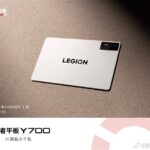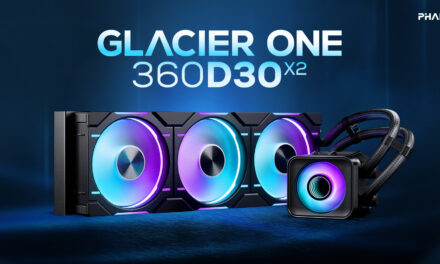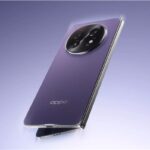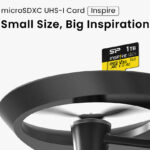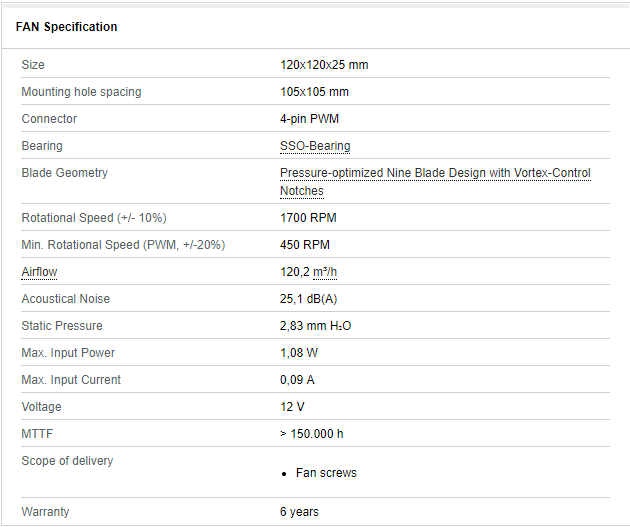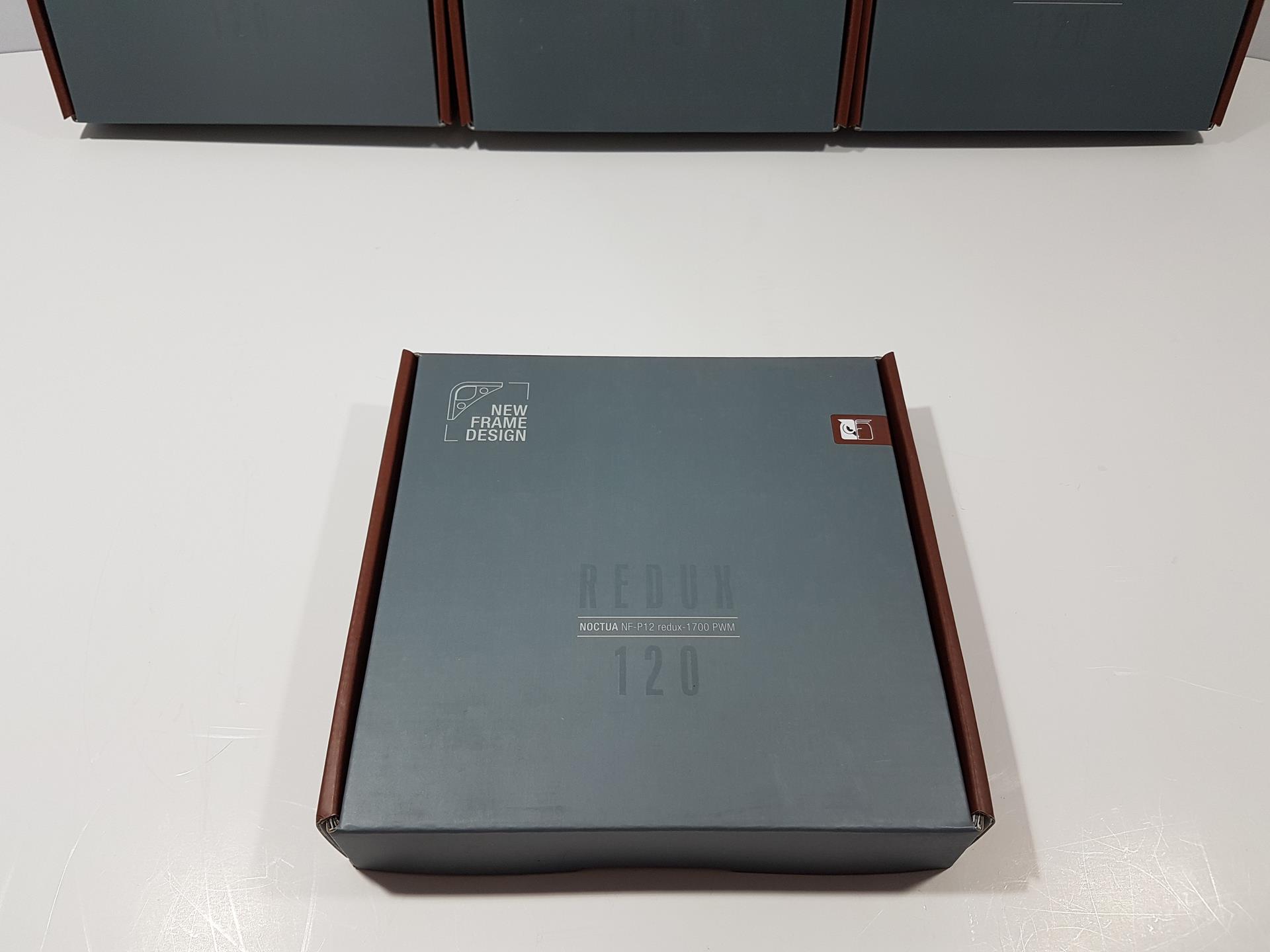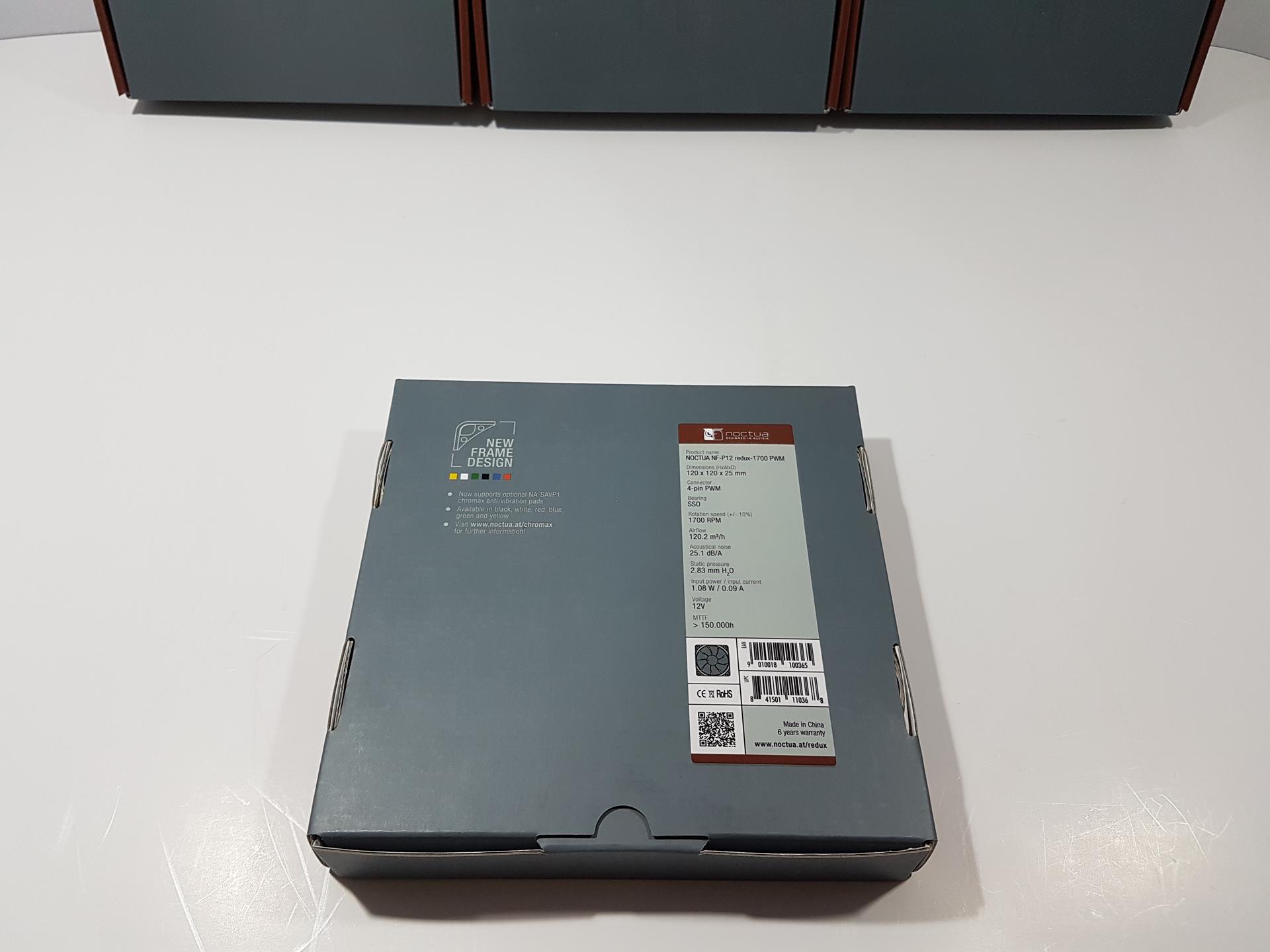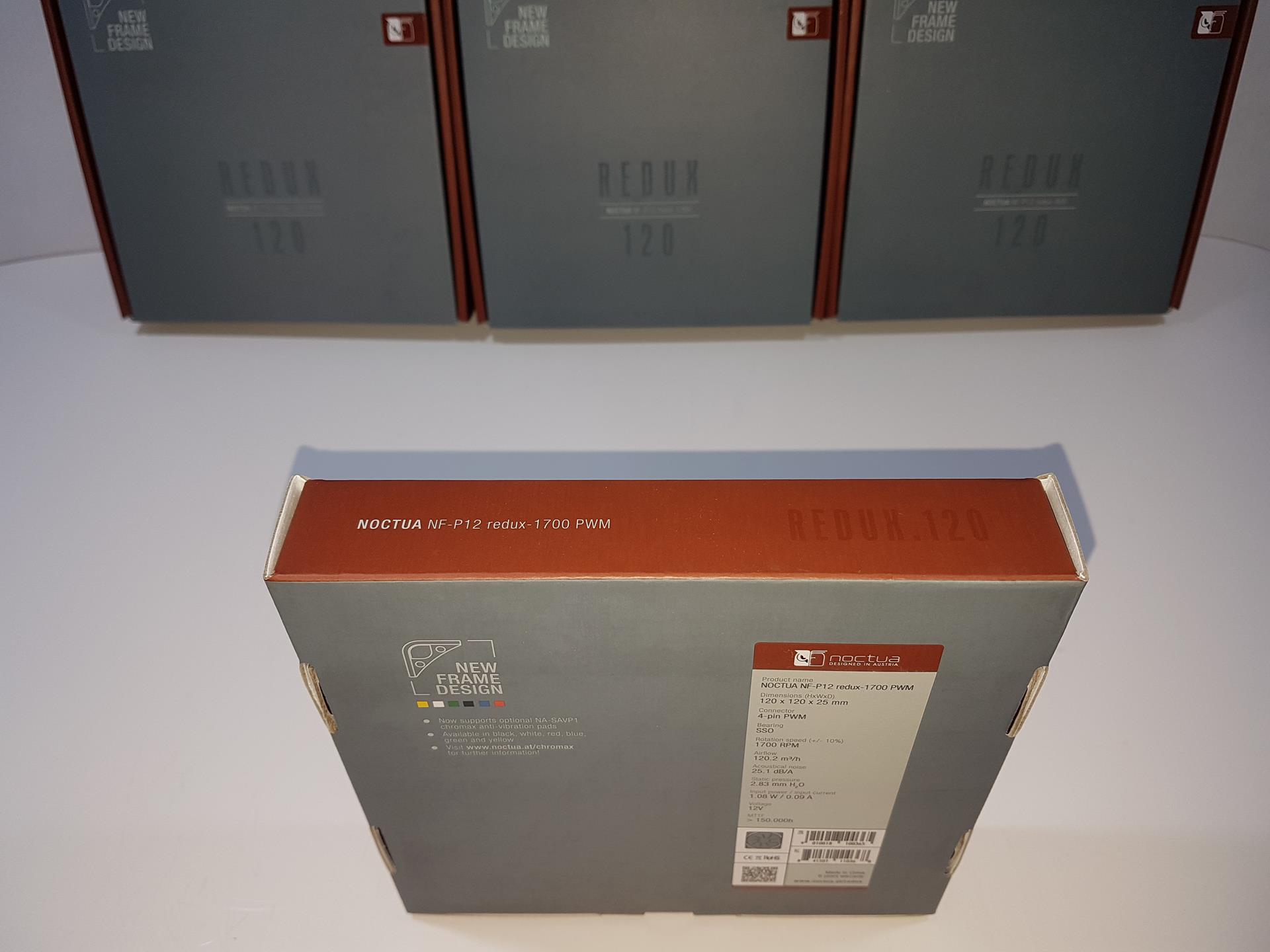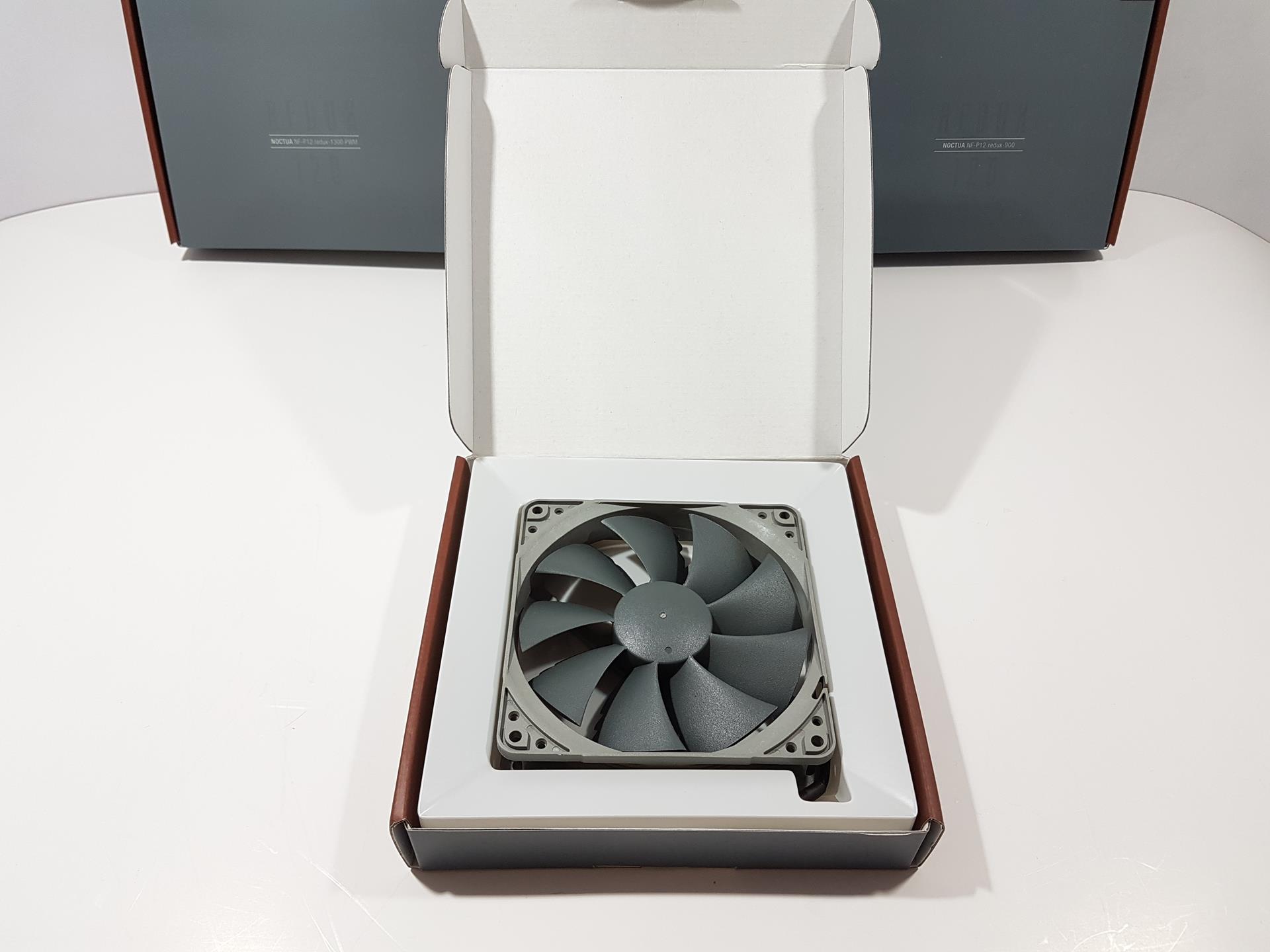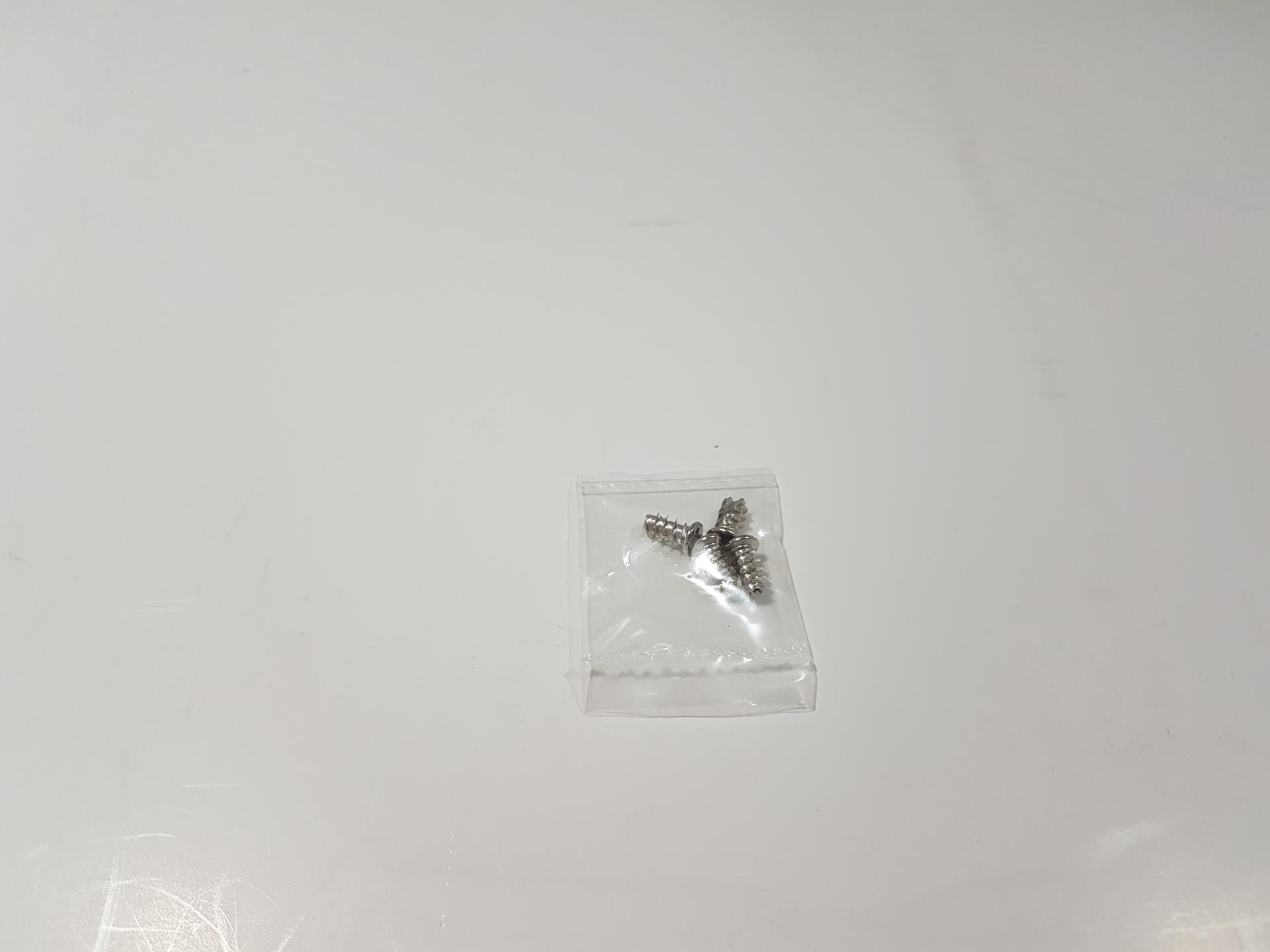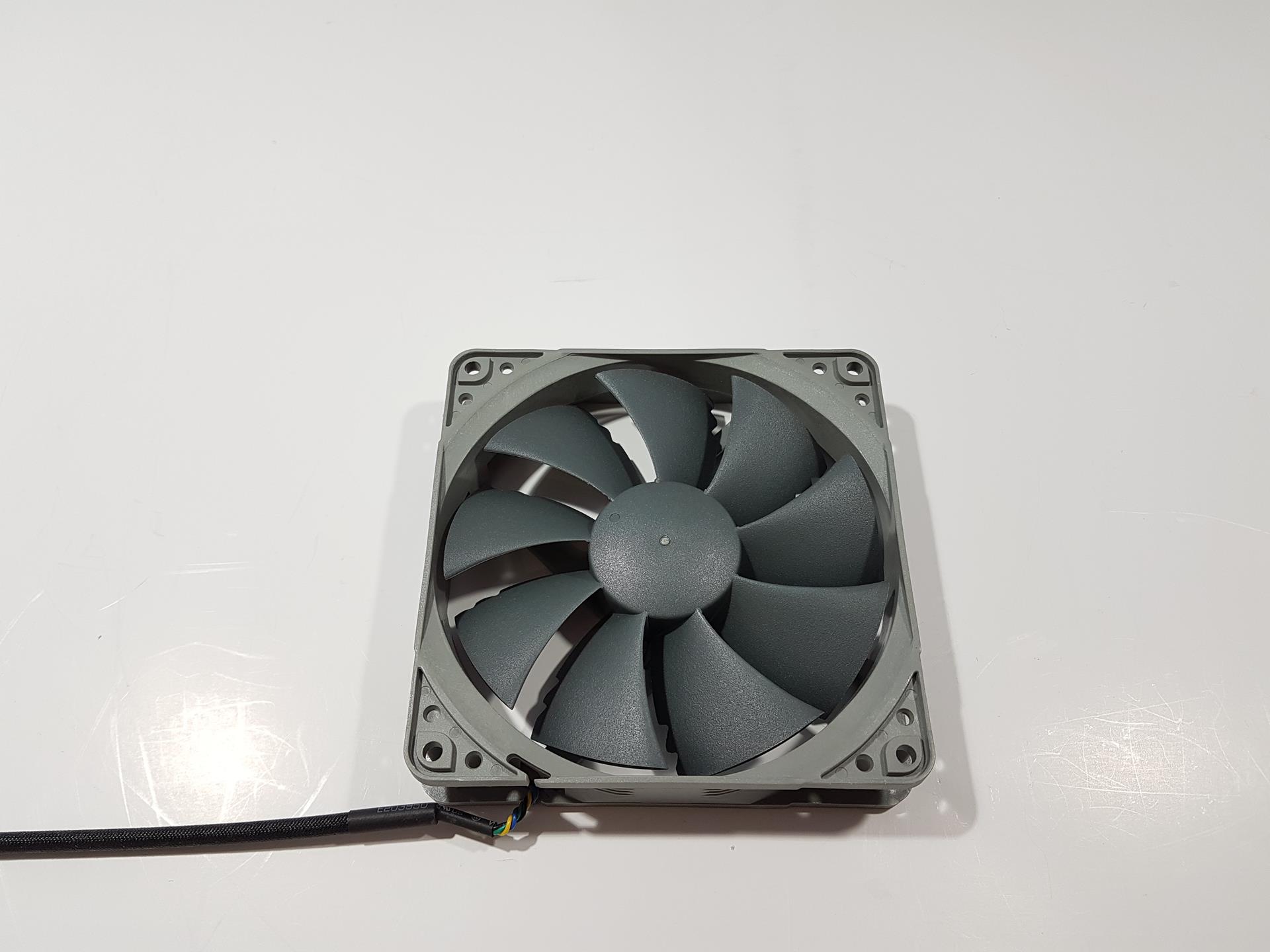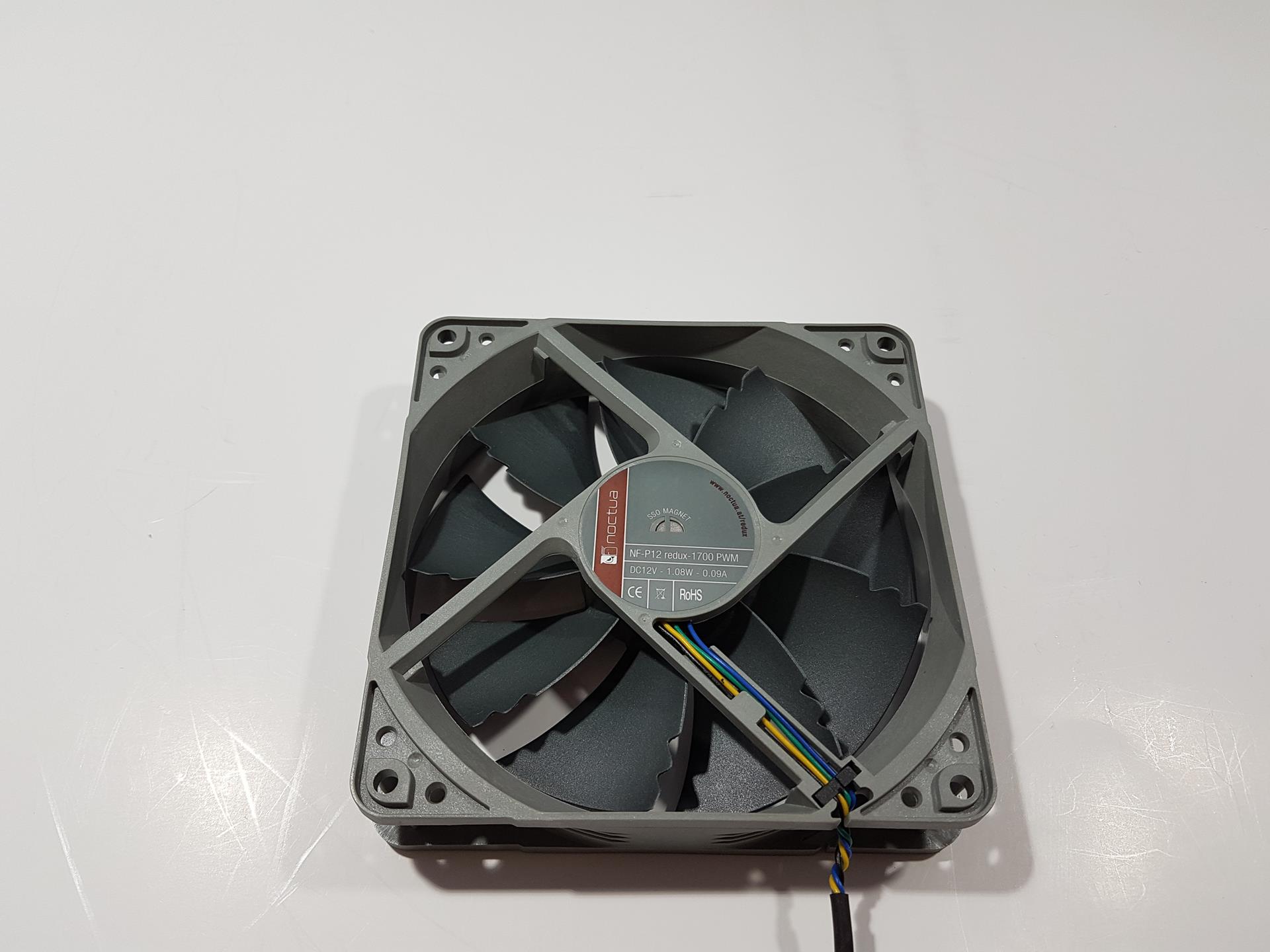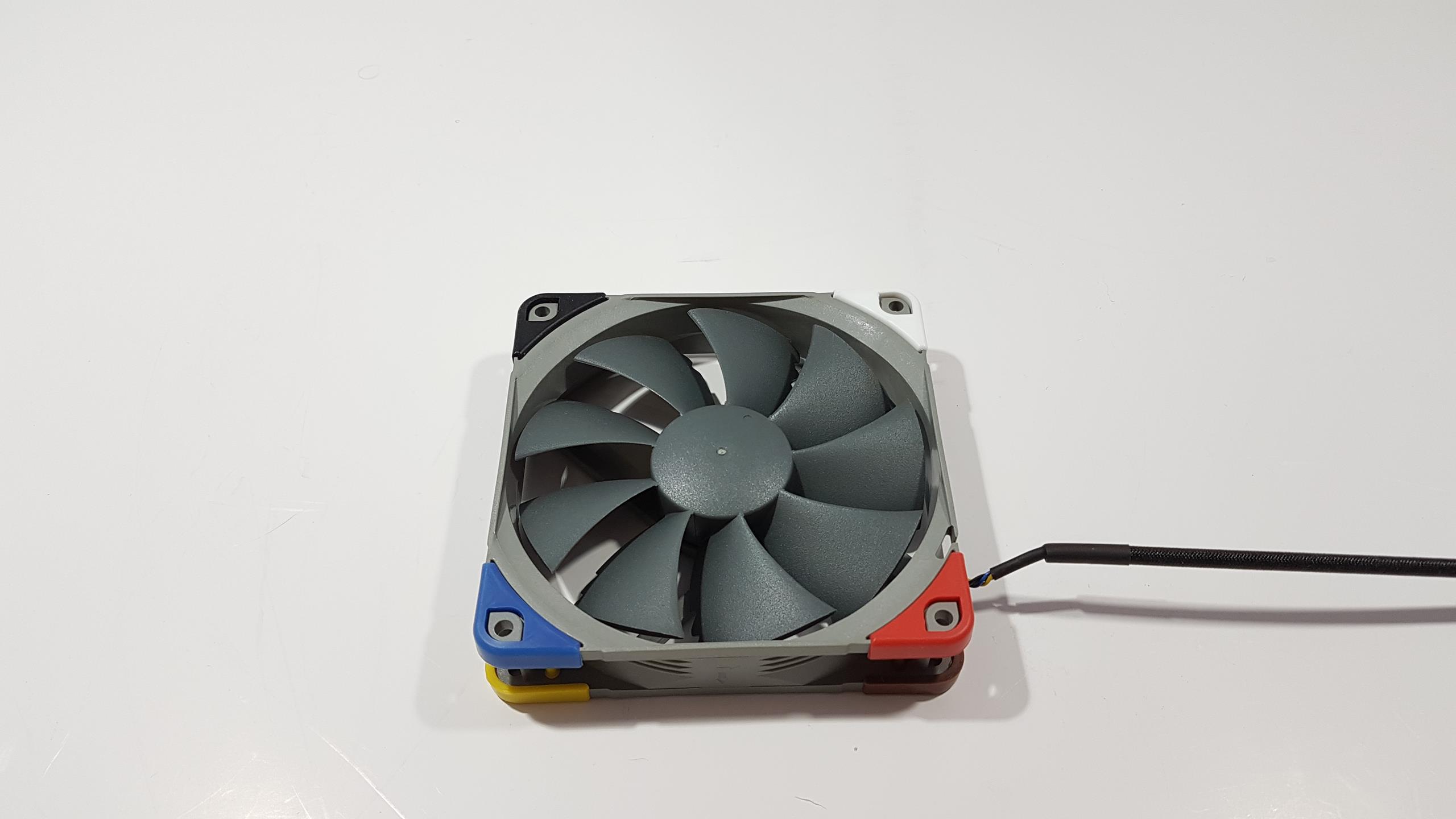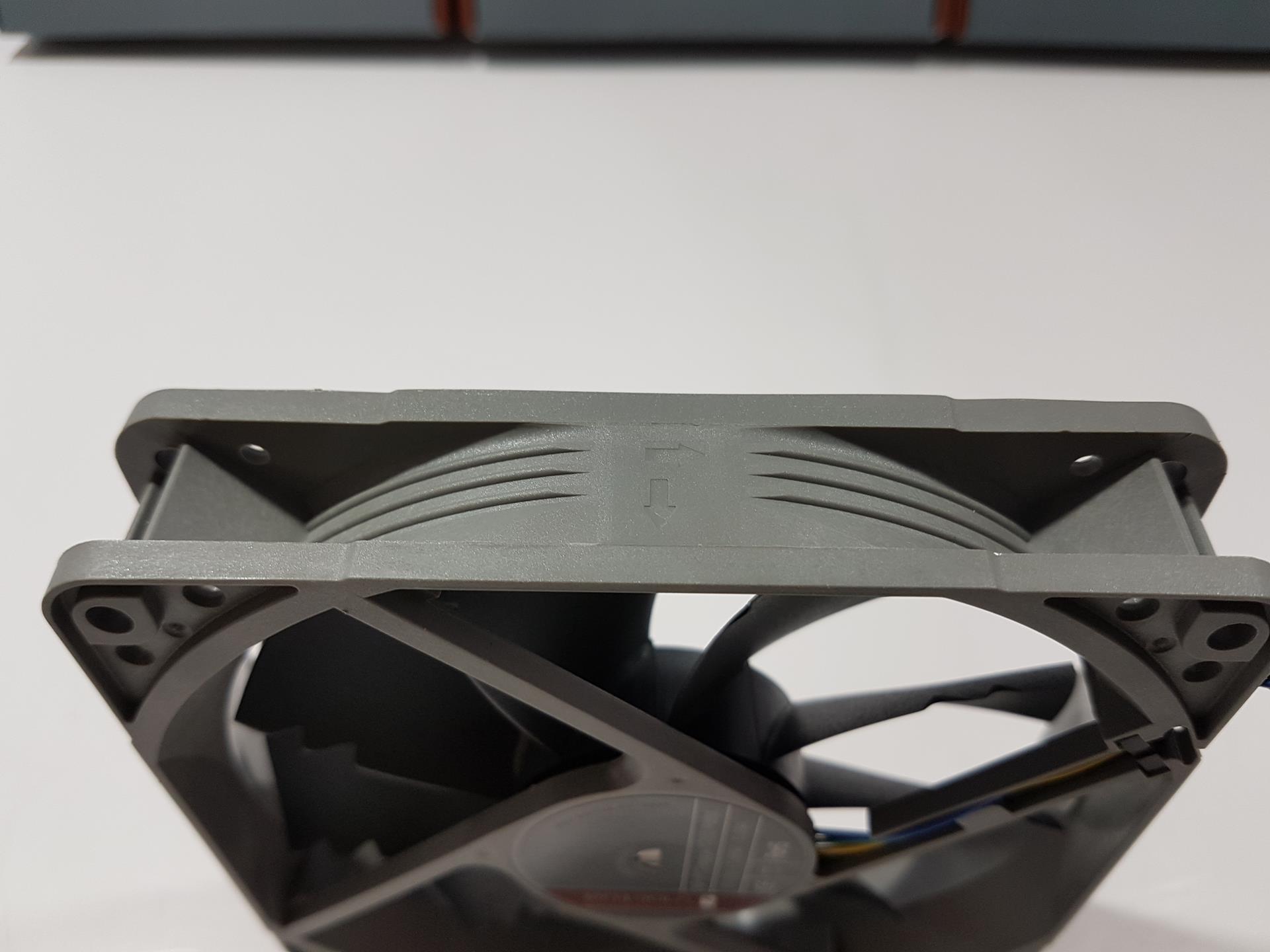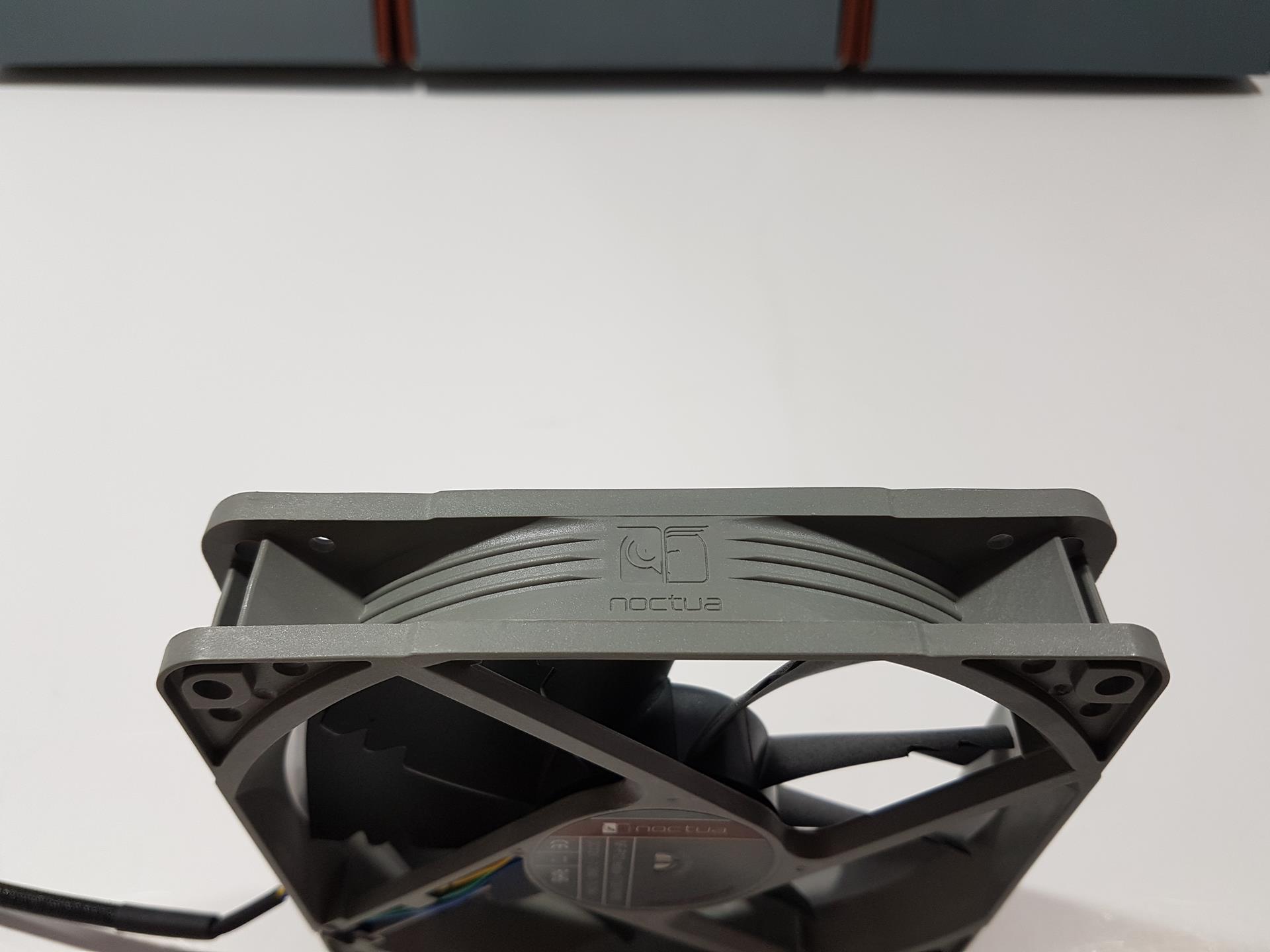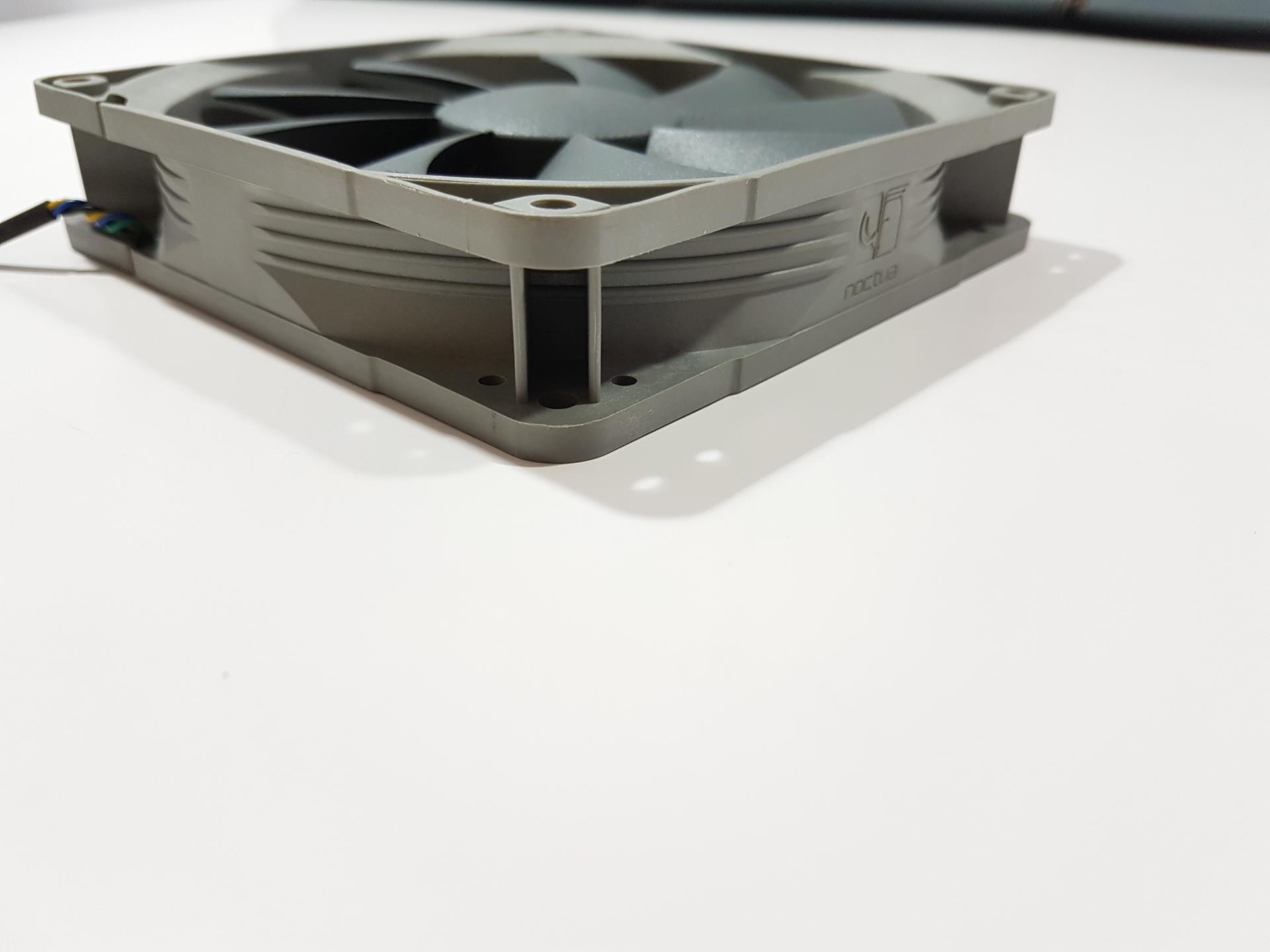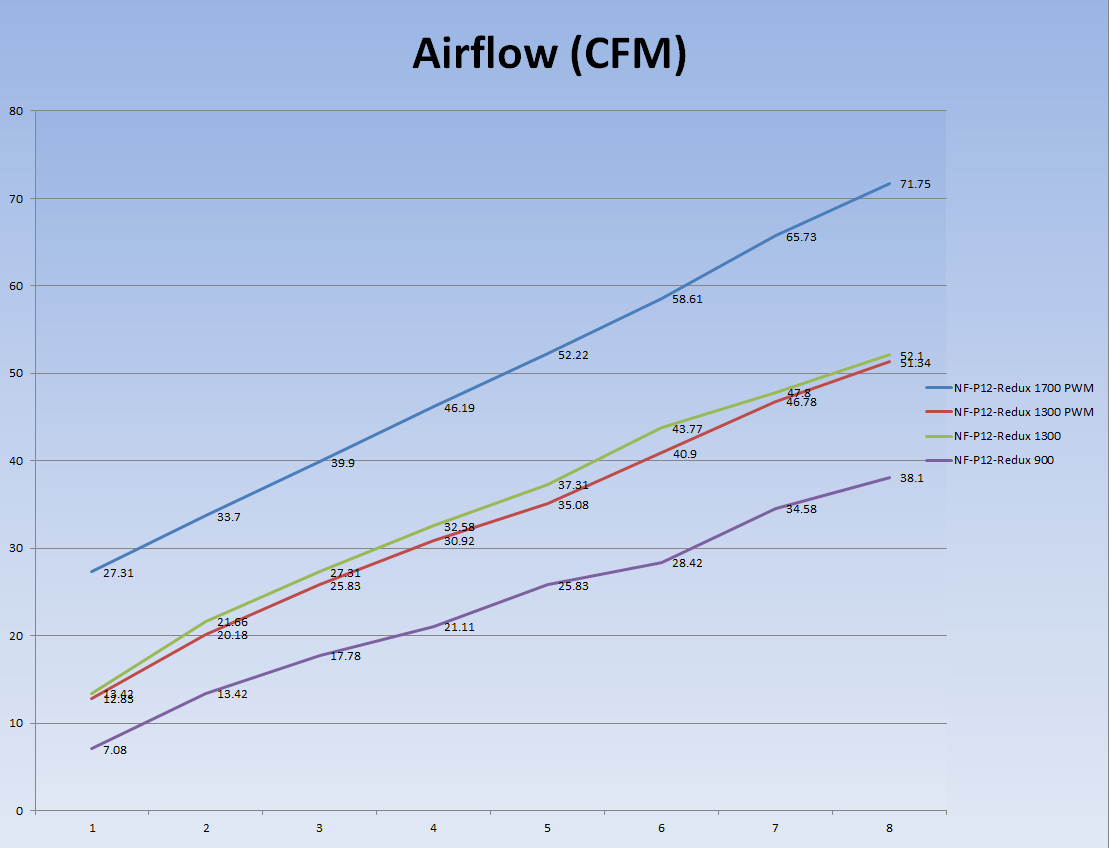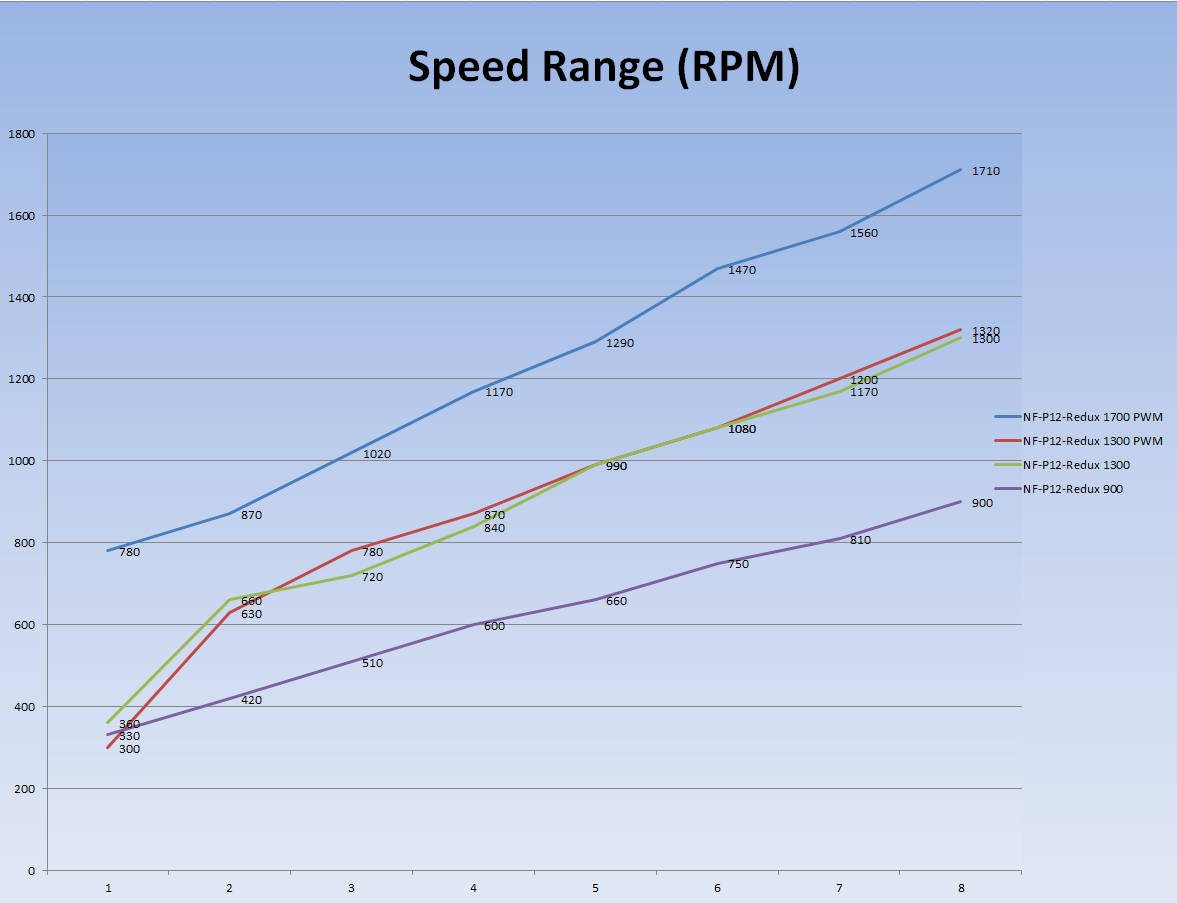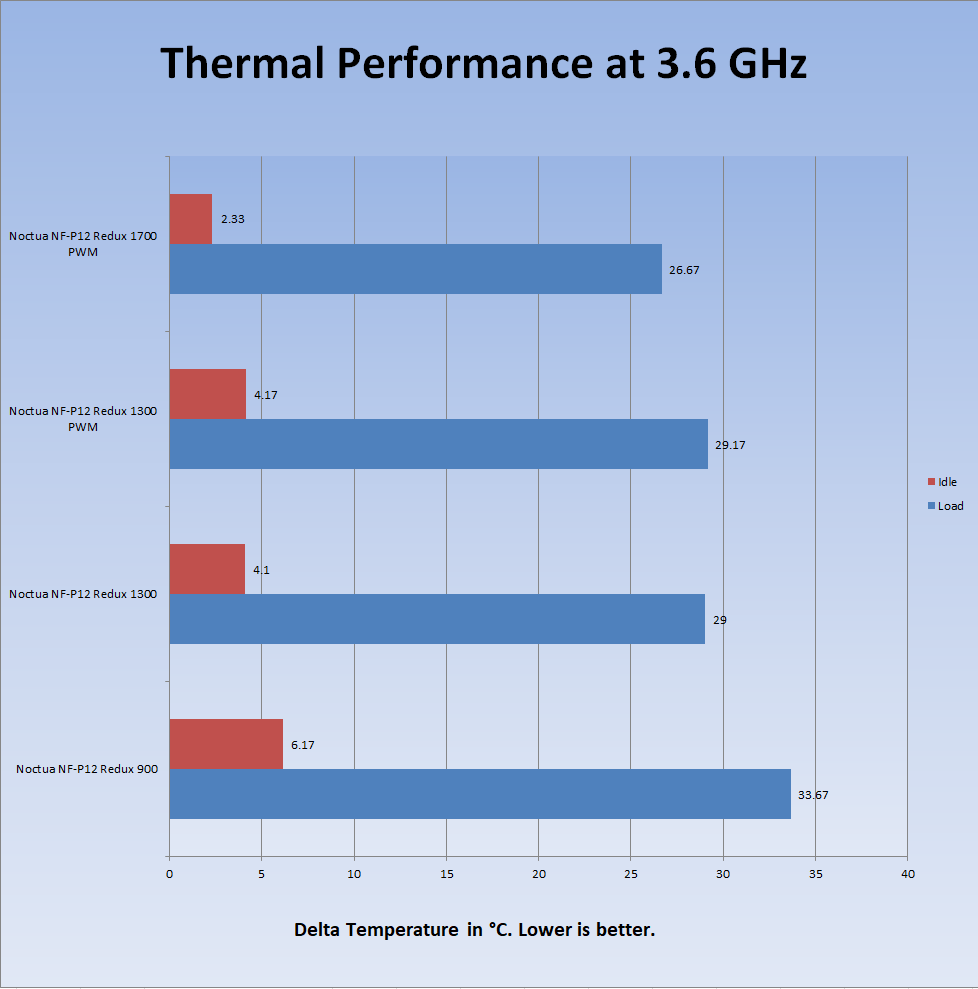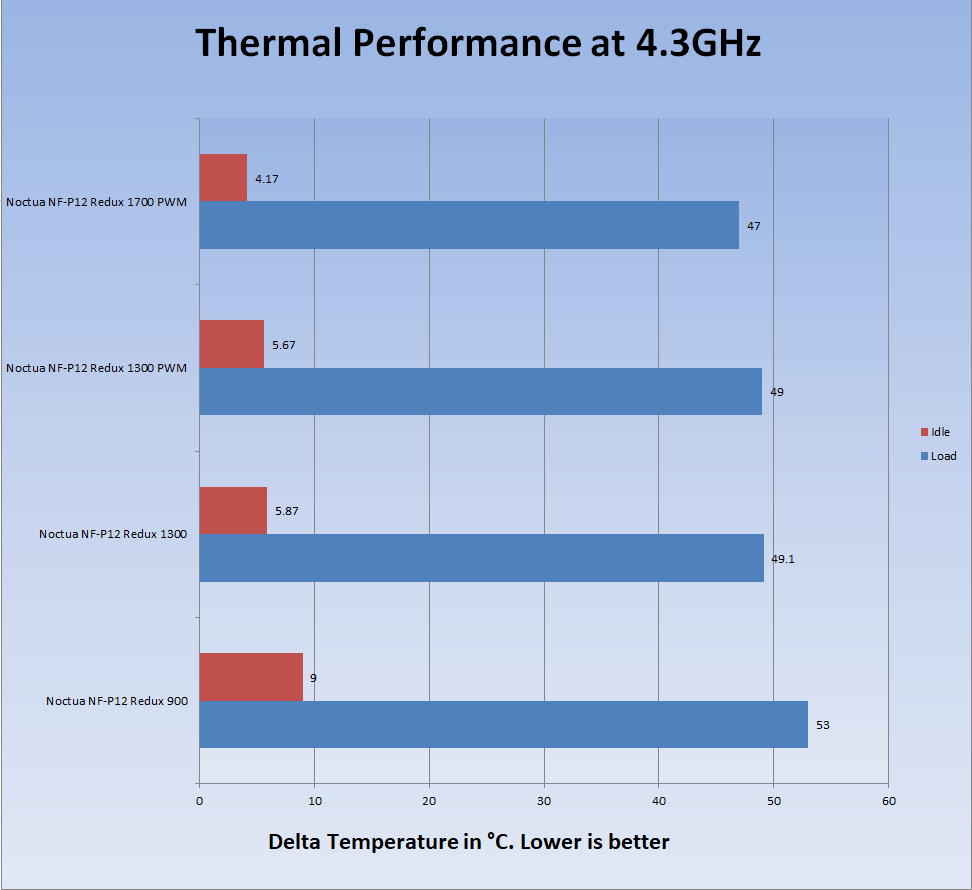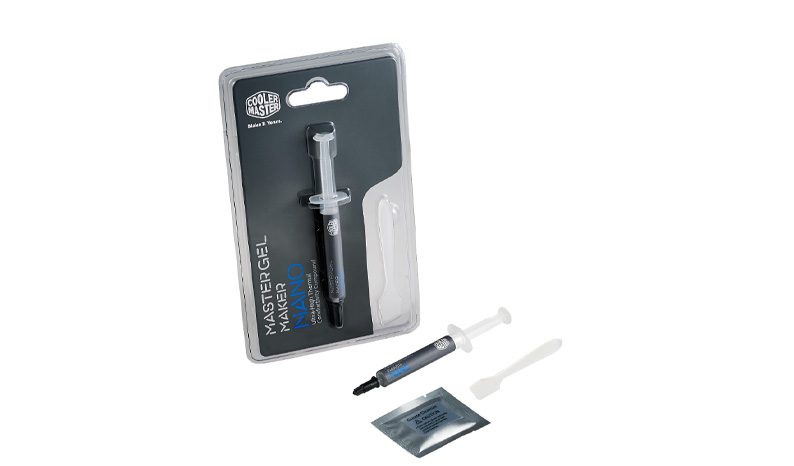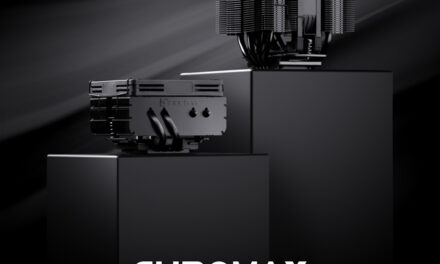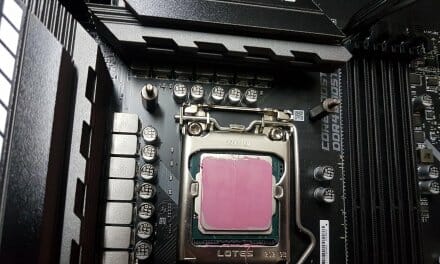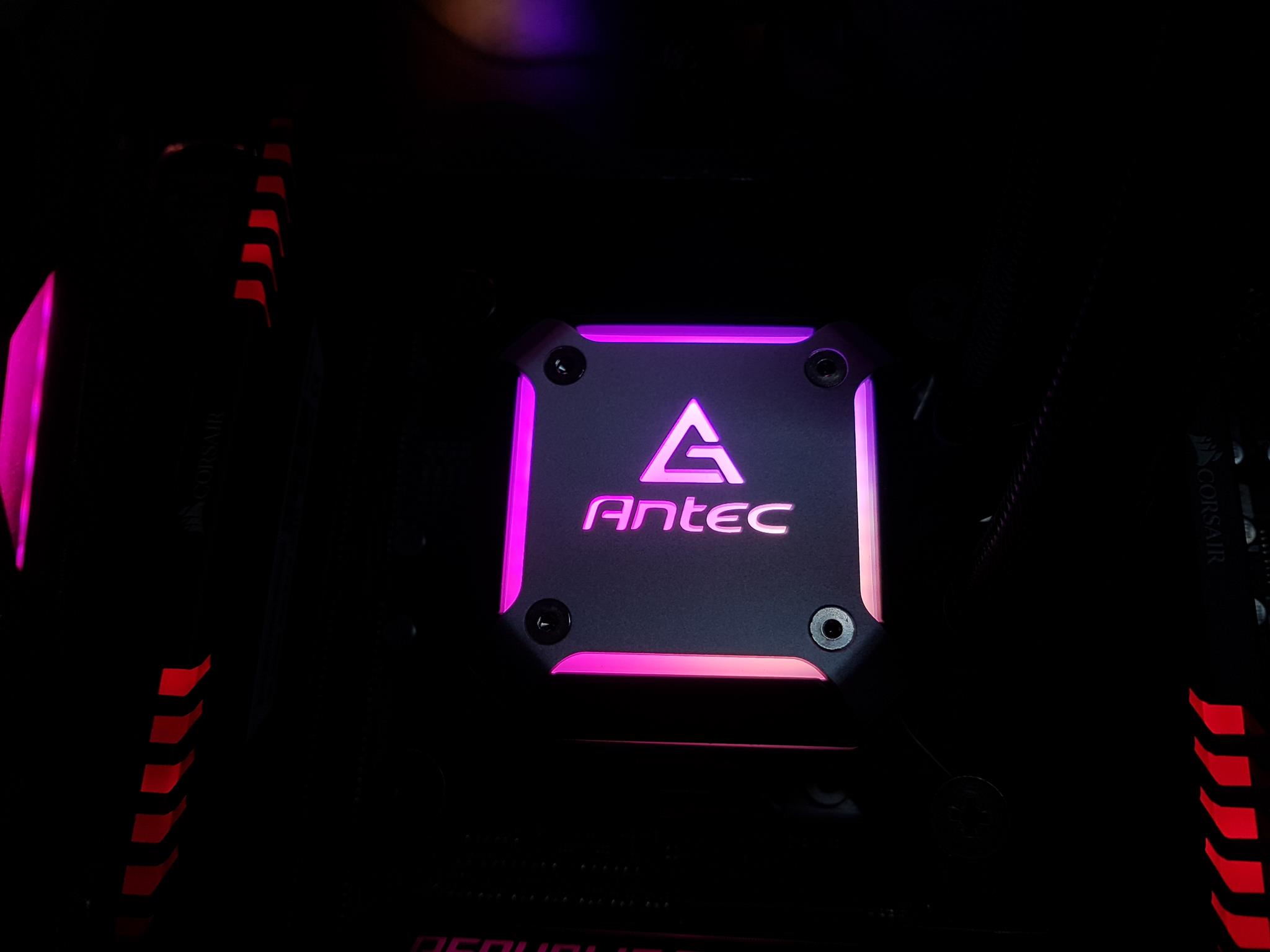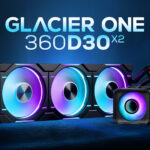
Noctua NA-P12 redux-1700 PWM, 1300 PWM, 1300, 900 Fans Review
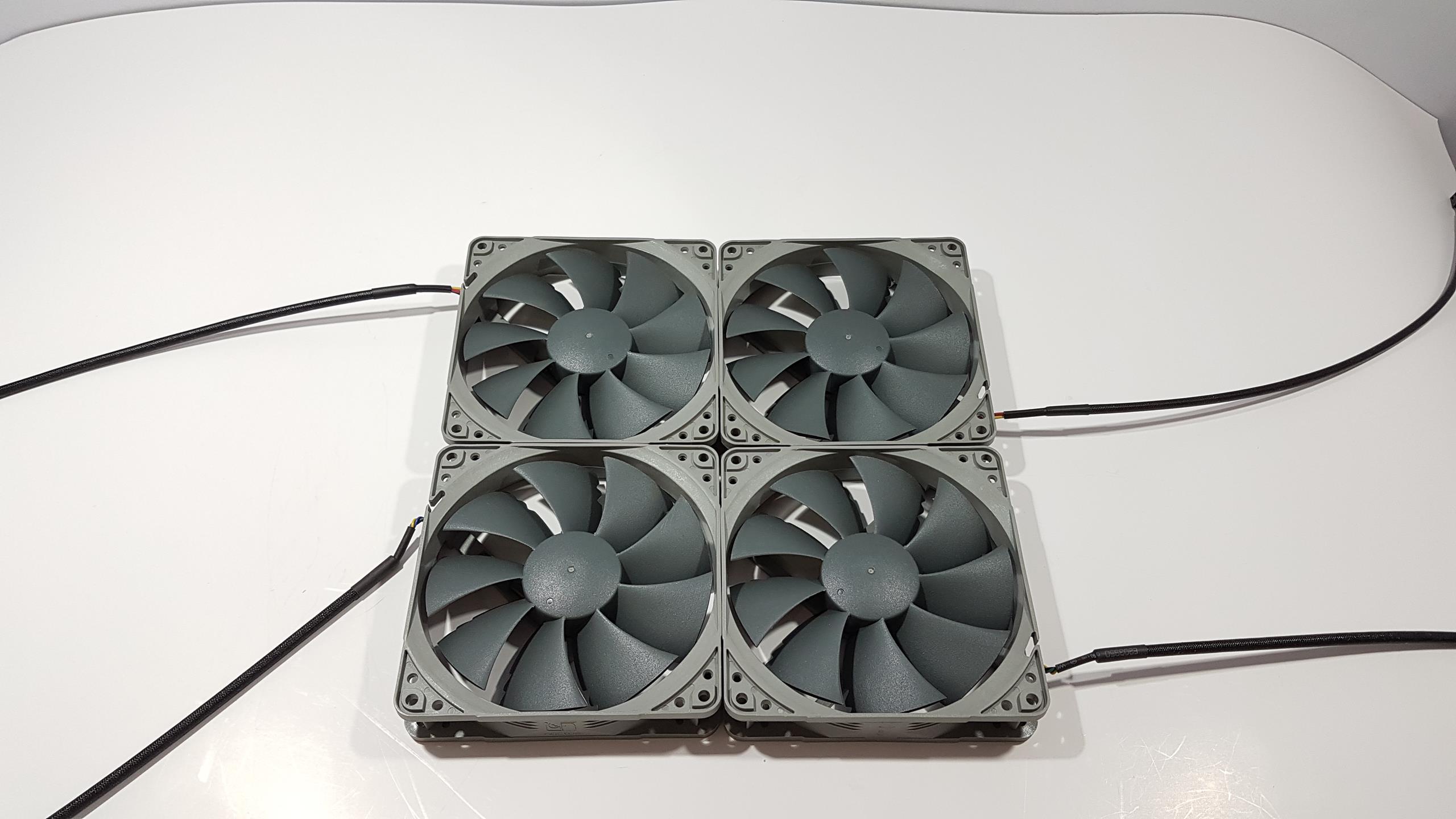
Introduction
Noctua originates from a collaboration between the Austrian Rascom Computer distribution Ges.m.b.H. and the Taiwanese cooling specialist Kolink International Corporation, pooling more than thirty years of experience in the development, manufacturing, and marketing of high-end cooling components. Established in 2005, Noctua took international silent enthusiasts’ hearts by storm and quickly developed into one of the most acclaimed suppliers of premium quality quiet cooling products. Today, Noctua is present in more than 30 countries across the globe and working with several hundred sales partners. Chosen by noise-conscious PC users, system integrators and industry clients alike, Noctua has become synonymous with impeccable quality, excellent customer service, and class-leading quiet cooling performance.
Noctua has recently launched their new generation of fans i.e NF-A12x25. We took a look at them and spin them around for the testing. They pack solid performance but this performance is coming at $29.90 per fan which is a premium price for the premium cooling solution. Noctua did not forget the budget users and their new Redux.120 series fans are about that. Today, we will be taking a look at their 4 Redux.120 series fans which are NF-P12 1700 PWM, 1300 PWM, 1300, and 900 versions. Each version has a specific application so make sure to check this out before buying.
Item: NF-P12 redux-1700 PWM
Manufacturer: Noctua
Price: $13.90 for above versions at the time of the review
Specifications
Packaging and Contents
All versions of the NF-P12-Redux series fans come in a simple yet elegant packaging made of the cardboard box. There are two color tones on the box, Gray and Noctua’s typical Brown color. The top side of the box has the gray color background. On the top left side, there is a diagram of the mounting side showing the new frame design. These versions of the Redux fan are compatible with the Chormax series NA-SAVP1 anti-vibration pads which is a handy feature. The top right side has a Noctua brand logo printed on it. At the near bottom, the version of the fan is printed. We are showing the NF-P12-Redux-1700 PWM version in unboxing. Other fans have their own model no printed in this place. Redux is printed on the top side of the model of the fan and 120 is printed under it. The left and right sides are in brown colors to create contrast. There is no printing on these sides. The rear side has the model of the fan printed on the left side and Redux.120 on the right side indicating that these are 120mm fans in the Redux series. Let’s take a look at the backside. We have the same symbol as we saw on the top side. There are small squares under the diagram in multiple colors showing the compatibility with the NA-SAVP1 anti-vibration pads. These pads are available in red, green, black, white, blue, and yellow colors. A sticker type printing is on the right side. It has the specifications of the fan printed on it. The EAN and UPC info labels are printed on its bottom side. The fan is made in China and carries the Noctua’s legendary 6 years warranty. The opening side has a light gray color background. Opening the box would show that the fan is placed inside the white color translucent plastic container. The color of the fan and this container create some great visuals.
Accessories
Noctua has included only 4 silver color screws for fan installation. This reminds me of their iPPC series fans where only 4 screws are provided as well but that is done to drive the price down. Here the theme is to provide the users with optional accessories and keep the price down.
Closer Look
The theme about Redux lineup is that Noctua take their most popular, award-winning models and present them to the audience in streamlined packages that have been reduced to their core essential which is giving the audience same premium quality products which are quite as well for effective cooling solution but at much lowered price making this lineup of products to be available at more accessible price point than the premium cooling solution. We did mention the price of their new NF-A12x25 where a single fan is costing $29.90 which is a premium price tag but carries premium cooling solution as well. Don’t let the price drift you away from their new fans, read out a detailed review here and see what magic Noctua has done with these fans. Let’s take a closer look at the new Redux fans which are based on their proven and legendary NF-P12 120mm fans.
The fans come in premium packaging which is a hallmark of Noctua but there are only a fan and 4 screws in a single pack. No other accessory is included which helps in keeping the price to be more accessible for masses. The user can still buy optional accessories from Noctua with these fans. This is what I have been mentioning that certain accessories could have been made optional which would make the pricing more competitive. These fans are in typical light and dark gray colors which are typical for their Redux line. The frame of the fan is in the light gray shade. They have introduced a new mounting corner design on these fans. There are two small size holes on the exterior of each mounting corner, in addition, the main cornered mounting hole. This design has made these fans compatible with Noctua NA-SAVP1 Chromax anti-vibration pads which are available in Red, Green, Blue, Yellow, Black, and White colors. These are optional accessories that user can buy from Noctua. The user can buy more accessories like y cable, low noise adapter, 3:4 pin adapter, extension cables etc as well for these fans. The fan does not have any anti-vibration pad installed on it. The sides of the frame near the mounting holes have an inward slope and is not a stepped design whereas the centerpiece of the frame has straight line design. There is 105mm spacing between mounting holes. There is no sticker on the motor hub. We have 9 blades in dark gray color. The motor hub top surface is not plain. Specifically developed for high-impedance applications such as CPU coolers, water-cooling radiators or cases with tight fan grills, the NF-P12’s nine-blade impeller provides outstanding pressure and airflow performance.
The top side of the frame has two arrow indicators. They are there to help the user in determining the direction of the airflow and direction of the impeller movement. On its opposite side, Noctua brand name and logo are embossed. The frame of the fan is sturdy and we did not see any flex in it. Let’s take a look at the backside of the fan. There is a 4 arms assembly connecting and holding the impellers on to the frame. There is a sticker on the hub. This sticker is in the dark gray shade. There is a Noctua brand logo printed on the left side. The model of the fan and its power specifications are printed on the bottom. The website address of the manufacturer is printed on the top right side. The center has an opening showing the SSO magnet that has been used in these fans. These fans feature the Noctua’s SSO bearings. Note that these are not SSO2 bearings. Combining the proven concept of hydrodynamic bearing with an additional magnet that supports the self-stabilization of the rotor axis, Noctua’s time-tested technology has become synonymous with a supremely quiet operation and exceptional long-term stability. Use of SSO bearings has enabled them to bring forward the more than 150,000 hrs MTBF rating on these fans. The frame here has a same design what we saw on the front side. One can see the notches on the trailing edges of the impellers. Noctua’s signature Vortex-Control Notches split up trailing edge vortices and thus spread the fan’s noise emission over a wider range of frequencies. This measure makes the fan sound more pleasant to the human ear. Noctua is using Smooth Commutation Drive 2 in these fans which is the latest version of Noctua’s advanced Smooth Commutation Drive system ensuring the superb running smoothness by eliminating torque variations and switching noises. This makes the fan remarkably quiet even at very close distances. The PWM versions are using custom designed PWM IC with the smooth commutation drive. Supporting fully automatic PWM speed control, the fan uses Noctua’s custom-designed NE-FD1 PWM IC that integrates Smooth Commutation Drive (SCD) technology. By providing smoother torque impulses, SCD suppresses PWM switching noises and thus makes the fan quieter at low speeds.
Now, let’s take a look at the specifications of the fans in comparison:
| Variable | NF-P12 1700 PWM | NF-P12 1300 PWM | NF-P12 1700 | NF-P12 900 |
| Size | 120x120x25mm | 120x120x25mm | 120x120x25mm | 120x120x25mm |
| Mounting Hole Space | 105mm | 105mm | 105mm | 105mm |
| Connector | 4-pin PWM | 4-pin | 3-pin | 3-pin |
| Bearing | SSO | SSO | SSO | SSO |
| Speed (± 10%) | 1700 RPM | 1300 RPM | 1300 RPM | 900 RPM |
| Min. Speed | 450 RPM | 300 RPM | – | – |
| Airflow | 120.2 m³/h | 92.3 m³/h | 92.3 m³/h | 63.4 m³/h |
| Acoustical Noise | 25.1 dB(A) | 19.8 dB(A) | 19.8 dB(A) | 12.6 dB(A) |
| Static Pressure | 2.83 mmH₂O | 1.68 mmH₂O | 1.68 mmH₂O | 1.21 mmH₂O |
| Max. Input Power | 1.08W | 0.6W | 0.6W | 0.3W |
| Max. Input Current | 0.09A | 0.05A | 0.05A | 0.025A |
| Voltage | 12V | 12V | 12V | 12V |
| MTTF | > 150,000h | > 150,000h | > 150,000h | > 150,000h |
| Warranty | 6 years | 6 years | 6 years | 6 years |
Before moving on to the testing section, here is a brief rundown of the specific applications that would require specific variant of these fans:
| Redux.120 Model | Application |
| NF-P12 redux-1700 PWM | This fan is ideal for high-efficiency case, radiator and CPU cooling as well as other applications that require both extended performance headroom and PWM for automatic speed control. |
| NF-P12 redux-1300 PWM | The 1300rpm PWM version features Noctua’s proprietary NE-FD1 PWM IC for automatic speed control, which allows to strike a perfect balance between high cooling capacity and low noise operation in each given situation. |
| NF-P12 redux-1300 | This fan is ideal for efficient case ventilation or other applications that demand an even balance between performance and quietness. |
| NF-P12 redux-900 | This fan is ideal for ultra-low-noise applications and highly noise sensitive users who demand near-silent operation. |
Testing and Methodology
We will be testing each version of these fans on the Noctua NH-U12S. The unrestricted airflow of these versions will be tested using the PerfectPrime WD9819 Anemometer. Since it is a peak of the summer season here with ambient reaching 45°C, I will not be testing the acoustical performance of these fans due to certain uncontrollable noises. These will be subjective based on my experience with testing various fans and coolers thus far. Let’s start with the airflow testing.
Airflow
Noctua is using the m³/h unit for the airflow. We are using the CFM unit. 1 m³/h is roughly equivalent to 0.589 CFM. Here is the airflow rating table:
| Model | Rated Airflow (CFM) | Tested Airflow (CFM) |
| NF-P12 1700 PWM | 70.79 | 71.75 |
| NF-P12 1300 PWM | 54.36 | 51.34 |
| NF-P12 1300 | 54.36 | 52.1 |
| NF-P12 900 | 37.34 | 38.1 |
Airflow rating for the NF-P12 1700 PWM and 900 versions have been validated, however, for the 1300 PWM and 1300 versions the tested airflow values fall short of the rated airflow values by 4.15% for 1300 version and 5.55% for the 1300 PWM version. Given the margin of error and manufacturing impurities, these are within the 10% of the margin scope.
Speed Range
The Reeven Polariz RFC-04 fan controller was used to regulate the speed of the fans. The NF-A12x25 PWM reaches 2070 RPM validating its rated speed. The NF-P12 1700 PWM version reaches 1710 RPM validating its rated speed. The NF-P12 1300 PWM reaches 1320 RPM validating its speed. The NF-P12 1300 reaches 1300 RPM validating its speed. The NF-P12 900 reaches 900 RPM validating its speed. The lower speed on the 1300 (both variants) was 330 and 360 RPM after which they took a rapid increase in the speed reaching to 630 and 660 RPM.
Thermal Testing
Thermal performance of the fan was tested on this test bench:
- Intel i7 6850k
- Asus Rampage V Edition 10
- Ballistix Elite 4x4GB @ 3000MHz
- Noctua NH-U12S
- Samsung 840 EVO 250GB
- Corsair AX 1200i
Testing was performed on the Microsoft Windows 10 x64 Professional edition build version 1709. Noctua NT-H1 thermal paste was used. The fans were tested 100% of their speed. Asus RealBench v1.44 was used to stress test the CPU. RealTemp was used to monitor the temperatures. First, the stress test was run on the stock clocks of 3.6GHz at 1.14V VCore. XMP was loaded all the times. Reported temps are delta ones which are calculated by subtracting the average of each core’s maximum temps from the ambient temp. The benefit of using delta temps is that it covers the variation in the temperatures under uncontrolled environment. Next, the Chip is overclocked to 4.3GHz at 1.350V VCore. XMP is loaded as well. The stress test is run again using the same methodology as described above and delta temps are noted. Each run was of 60 minutes.
Let’s take a look at the thermal performance on the Noctua NH-U12S.
On stock clocks, under stress test, the NF-P12 1700 PWM was doing 26.67°C delta temps. Both variants of NF-P12 1300 were neck-to-neck with 29°C delta temps. The NF-P12 900 was doing 33.67°C which is on a warmer side particularly on the stock clocks but given its 900 RPM maximum speed and the aim behind it, this level of silent performance is actually good. This is a good performance overall and particularly given the low noise level on these fans, Noctua is once again delivering in the Noise-to-Performance ratio category.
With overclocked chip at 4.3GHz, under stress test, the NF-P12 1700 PWM was doing 47°C delta temps. Both variants of NF-P12 1300 were neck-to-neck with 49°C delta temps. The NF-P12 900 was doing 53°C which is on a hot side. The 900 variant is not designed to fulfill your overclocking requirements but to provide the adequate cooling on stock clocks but at exceptionally low noise level.
These fans were near to silent and even at full speed, the audible sound of NF-P12 1700 PWM was not teasing. The other fans on full speed were near silent.
Conclusion
Noctua has recently launched their new generation of fans in NF-A12 line up. We have already reviewed the NF-A12x25 series of fans found them delivering powerful performance at better noise levels. Those fans carry a premium price tag for this premium cooling. Noctua has also released value oriented 120mm fans in the Redux.120 line up. These fans are based on Noctua’s legendary NF-P12 fans. The redux line is based on picking the popular, award-winning models and bringing them in more streamlined packages at affordable prices. One thing is for sure that they have created value without compromising on the performance that one would expect from the redux line of fans.
The Redux.120 has four variants which are NF-P12 redux-1700 PWM, NF-P12 redux-1300 PWM, NF-P12 redux-1300, and NF-P12 redux-900. The former two are PWM versions for automatic speed control whereas the latter two are 3-pin format which can be operated using the DC Regulation mode of the fan control. All these variants are designed for specific cooling situation/requirement. The NF-P12 redux-1700 PWM is designed for high-efficiency case, radiator and CPU cooling and covers almost all aspect in a single offer. The NF-P12 redux-1300 PWM is designed for automatic speed control to ensure the perfect balance between the performance and the noise level. NF-P12 redux-1300 is ideal for efficient case ventilation or other applications that demand an even balance between performance and quietness. The NF-P12 redux-900 is ideal for ultra-low-noise applications and highly noise sensitive users who demand near-silent operation.
These fans come in premium packaging yet with minimalistic contents. The single box has one fan and 4 screws without any other accessory. The frame of the fan has been redesigned to make them compatible with NA-SAVP1 Chromax Anti-Vibration pads which are available in Red, Green, Yellow, Blue, Black, and White. The user can also buy y cable, low noise adapter, extension cable etc as well to be used with these fans. Making these accessories optional has helped Noctua to drive the cost down. The frame of the fan is in light gray color. The frame is sturdy without any flex. There are 9 impellers in dark gray color. These have notches on their trailing edges which help spread the noise on broader frequencies to make the noise appear pleasant to the human ear. These fans are using SSO bearings with over 150,000 hrs of MTBF. Combining the proven concept of hydrodynamic bearing with an additional magnet that supports the self-stabilization of the rotor axis, Noctua’s time-tested technology has become synonymous with a supremely quiet operation and exceptional long-term stability. Noctua is using Smooth Commutation Drive 2 in these fans which is the latest version of Noctua’s advanced Smooth Commutation Drive system ensuring the superb running smoothness by eliminating torque variations and switching noises. This makes the fan remarkably quiet even at very close distances. The PWM versions are using custom designed PWM IC with the smooth commutation drive. Supporting fully automatic PWM speed control, the fan uses Noctua’s custom-designed NE-FD1 PWM IC that integrates Smooth Commutation Drive (SCD) technology. By providing smoother torque impulses, SCD suppresses PWM switching noises and thus makes the fan quieter at low speeds.
These fans are rated at $13.90 at the time of the review. The same price is for each variant. In my opinion, the 900 RPM variant could have had a lower price. During our thermal testing, these fans have performed quite well and as is the case with the Noctua, these fans are aimed at providing the best possible noise-to-performance ratio which they have successfully delivered. The low price tag on these fans makes it ideal for the budget users to have a premium cooling solution from the Noctua without much burden on their wallets. These fans come recommended by us.
We are thankful to Noctua for giving us the opportunity to review their Redux.120 lineup of fans.







